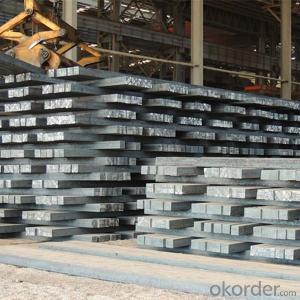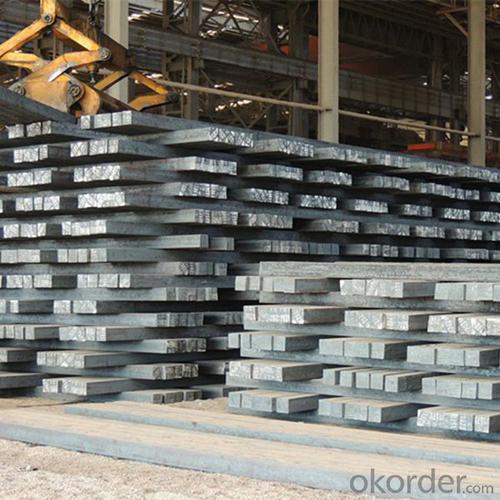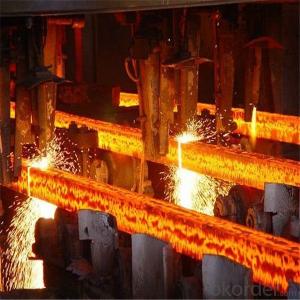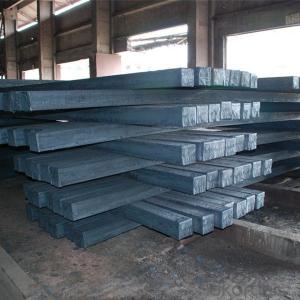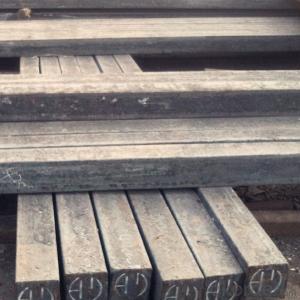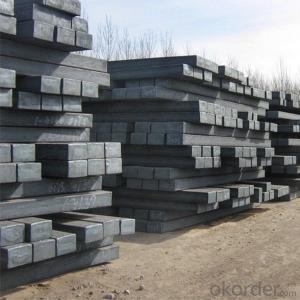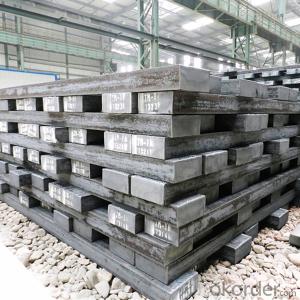Square Steel Billet, Square Bar, From China Manufacturer
- Loading Port:
- China main port
- Payment Terms:
- TT OR LC
- Min Order Qty:
- 1000 m.t.
- Supply Capability:
- 50000 m.t./month
OKorder Service Pledge
OKorder Financial Service
You Might Also Like
Specification
Square steel billet, square bar, mild steel billet best price from China manufacturer
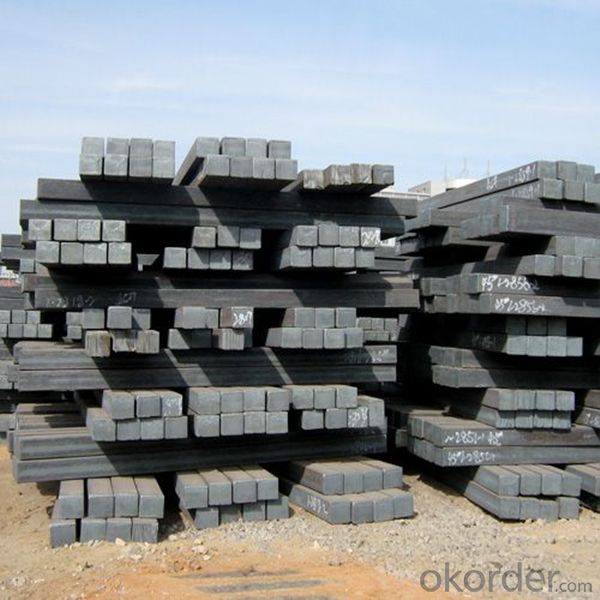
Steel Billets (60-150mm) with hot rolling
We are one of steel manufacturer, our company specializes in manufacturing profile steel products such as H beams,I beams , Channel steel,and also can find some best quality angle steel,steel plate,steel pipe ,steel coils and many kinds of steel products of this kind.
Company Main Product Introduction:
Steel billet
Steel Profile:H-Beam/I-Beam/Equal Angle/Unequal Angle/U Channel /Flat Bar
Steel Plate:Hot Rolled Coil/Hot Rolled Checkered Coil/Cold Rolled Coil/Cutting Sheet
Wire Bar: Round Bar /Wire Rod/Deformed Bar
Steel Pipes: Seamless Pipe, Square/Round Pipes
Galvanized Steel: Angle/Channel/I-Beam/Round Bar/Flat Bar/Round-Square Pipe
Application:
Wire rod, deformed bars, rebar, profile steel, mechine parts and so on
Specification:
| Type | Square, rectangular |
| Standard | GB, ASTM |
| Size | 60X60-150X150mm |
| Length | 6-12M or customised |
| Processing | Hot rolled continuous cast |
| Packing | Export standard packing |
Adventage:
1. Prime quality and competitive pirce
2. Good reputation and large market
3. Big company scale
4. Good service and prompt reply
- Q: in a lab at school we did heat treatment of steelwhat are the possible phases present in the steel sample in as-received, as-quenched and as-tempered conditions? specifically when is it ferrite, austenite and pearliteis the steel originally in the ferrite phase? then when headed turns into austenite and when quenched martensite is formed and when tempered cermentite is formed...........where is pearlite involved and am i correct about the ferrite?
- hey from what i learned in uni last sem, steel is originally ferrite form at first at room conditions. it will undergo poly morphic transformation to become FCC structure austenite form at 912 degree celcius. under conditions, it can become pearlite (which is a combination of ferrite and cementite) or bainitie( a finer form of pearlite). queching conditions to room temperature will form martensite which is the strongest but brittle steel form. tempered cementite is formed when we quench it and then raise temperatures before sir cooling. hope it helps, pls vote me best answer is i deserve it. thanks
- Q: What is the process of slitting steel coils into narrower strips?
- The process of slitting steel coils into narrower strips involves feeding a large steel coil through a slitting machine. The machine uses circular blades or rotary knives to make precise cuts along the length of the coil, creating narrower strips. These strips are then rewound onto separate reels or spools, ready for further processing or shipment.
- Q: What are the advantages of using steel coils in construction?
- Using steel coils in construction offers several advantages. Firstly, they possess immense strength and durability, enabling them to withstand heavy loads and resist deformation. As a result, they are perfect for structural purposes such as beams, columns, and frames. Secondly, steel coils exhibit exceptional versatility. They can be easily shaped and molded into various forms, providing flexibility in design and construction. Steel coils can be rolled, bent, cut, and welded according to specific project requirements. This adaptability makes them suitable for a wide range of construction applications. Another benefit of utilizing steel coils in construction is their resistance to corrosion. To prevent rusting and corrosion, steel coils are often coated with protective substances like galvanized or stainless steel. This ensures that the building's structural integrity remains intact over time, even in harsh environmental conditions. Furthermore, steel coils offer excellent fire resistance. Unlike materials such as wood, steel does not burn or contribute to the spread of fire. Hence, it is a safer option for construction, especially in high-rise buildings or areas prone to fire hazards. Lastly, steel coils are cost-effective. Although the initial cost of using steel coils may be higher compared to other materials, their longevity and low maintenance requirements make them a cost-efficient choice in the long run. Steel coils have a long lifespan and necessitate minimal repairs or replacements, resulting in reduced maintenance costs and increased overall value. In conclusion, the advantages of using steel coils in construction encompass their strength, versatility, corrosion resistance, fire resistance, and cost-effectiveness. These qualities make steel coils an outstanding choice for various construction applications, contributing to the durability and safety of buildings.
- Q: Classify the following in as many ways as possible:stainless steelpureheterogeneous mixturehomogeneous mixturenone of these
- homogeneous mixture
- Q: Or is it a coating that is applied? If so what types of steel? Or what types of coatings?
- No, usually they are just coated or galvanized. To make a steel that is truly more corrosion resistant raises it's cost quite markedly, where as coatings are pretty cheap. Almost all structural steel is just A36 mild steel (like 0.1% carbon, 0.05% Mn, and not much else). There are higher grades of structural steel, and bridges are made with truly more corrosion resistant carbon steels, but for a house it's just not the case.
- Q: What are the properties of high-strength steel coils?
- High-strength steel coils possess several key properties that make them desirable in various applications. These include exceptional tensile strength, excellent formability, and increased resistance to wear, corrosion, and impact. Moreover, high-strength steel coils typically exhibit higher yield and ultimate strength than regular steel coils, making them suitable for demanding structural and manufacturing purposes.
- Q: What are the different methods of coil joining for steel coils?
- There are several different methods of coil joining for steel coils, including welding, laser welding, stapling, and adhesive bonding.
- Q: How do steel coils contribute to the water and wastewater industry?
- The water and wastewater industry heavily relies on steel coils as a crucial component for constructing and maintaining its infrastructure. These coils, made from high-quality steel, offer numerous advantages for the industry. To begin with, steel coils are essential in the production of pipes and tubes used primarily for transporting water and wastewater. Steel pipes are renowned for their exceptional strength and durability, enabling them to withstand high pressure and heavy loads. This makes them ideal for water distribution systems, sewage networks, and treatment plants. Steel coils provide the necessary material to manufacture these pipes, ensuring reliable and long-lasting infrastructure. Furthermore, steel coils are also utilized in constructing storage tanks and reservoirs. These tanks are vital for water treatment plants, serving as storage for large volumes of water or wastewater during the treatment process. Steel coils provide the required material for fabricating these tanks, guaranteeing their structural integrity and preventing leaks or contamination. Moreover, steel coils are used in manufacturing various equipment and components indispensable in the water and wastewater industry. For instance, steel coils are employed to produce pumps, valves, and control systems, which are crucial for the efficient operation of water treatment plants, pumping stations, and sewage networks. Steel's strength and corrosion resistance make it an ideal material for these applications, ensuring reliable and long-lasting equipment. Additionally, steel coils are also employed in constructing wastewater treatment plants and facilities. These plants employ various processes to eliminate contaminants from wastewater before discharging it into the environment. Steel coils provide the necessary material for constructing these facilities, including structural supports, tanks, and other components. The durability and resilience of steel ensure the longevity and efficiency of these treatment plants. In conclusion, steel coils play an integral role in the water and wastewater industry by contributing to the construction and maintenance of critical infrastructure. They are used in manufacturing pipes, tanks, equipment, and facilities, guaranteeing the strength, reliability, and durability required for the efficient operation of water and wastewater systems.
- Q: Why is it usually scorned by the shooting community to use steel cased ammo (like Wolf)? Always hear corrosive and steel is bad for the extractor/firing pin. Hulp a simpleton out!
- if you were going to shoot thousands upon thousands of steel cases in your rifle, it would cause more wear than brass cases do. but for the casual shooter, it won't be a significant factor. Corrosive ammo is another story (but not all steel cased ammo is corrosive, and any made after 1975 is not corrosive). shooting corrosive ammo in a bolt gun is simple to care for. When finished shooting, simply clean out the barrel, chamber and bolt face etc with hot soapy water, or military bore cleaner. This nuetralizes the corrosive chemicals. then dry it well, and then do your normal clean and lube with break free CLP or whatever other lube you prefer. But for a semi auto, gas operated firearm, the cleaning process takes hours, with having to tear it down and clean every part including gas tube etc. As for the ectractor, same answer as above, since an extractor slides in front of the rim as the cartridge is fed, it really does not add much more wear if it is steel. The firing pin does not contact the steel case, only the primer, so no additional wear there. The biggest problem with wolf ammo is encountered when you fire a lot of rounds quickly, building up a lot of heat, which can cause the lacquer sealent on the case to turn gummy and this in turn will cause problems for the firearm. Answer? first, use wolf ammo for casual shooting and clean the firearm extensively afterwords. Save your better ammo for real life situations. I understand that some of the newer wolf ammo does not use the same lacquer sealant. I believe it is called silver bear, but don't quote me becasue I can't swear that that is it. shoot safe
- Q: What is the average lead time for receiving replacement steel coils?
- The average lead time for receiving replacement steel coils can vary depending on various factors such as the supplier, location, and specific requirements. It is recommended to consult with the supplier or manufacturer directly to get an accurate estimate of the average lead time for receiving replacement steel coils.
Send your message to us
Square Steel Billet, Square Bar, From China Manufacturer
- Loading Port:
- China main port
- Payment Terms:
- TT OR LC
- Min Order Qty:
- 1000 m.t.
- Supply Capability:
- 50000 m.t./month
OKorder Service Pledge
OKorder Financial Service
Similar products
Hot products
Hot Searches
Related keywords
